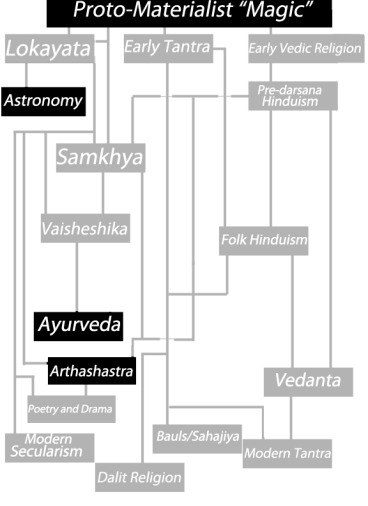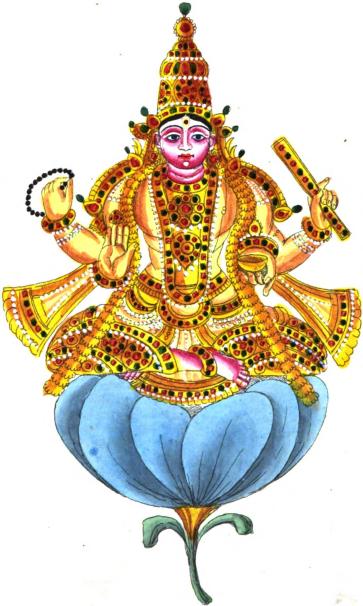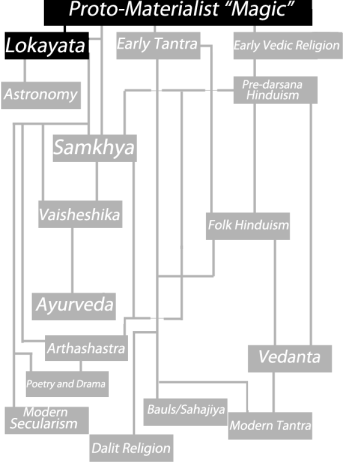(Click to go back to Part I: Doctrines)
(Click to go back to Part II: Proto-Materialism in Vedic and Tantric Traditions)
(Click to go back to Part III: Orthodox Darshanas)

Political theory
The word Lokayata occurs only once in the Arthashastra (PDF here), but it is a very significant mention. The treatise opens with the line “Om, salutations to Sukra and Brihaspati” the two progenitors of materialism and deha-vada (doctrine of the body as soul) in Vedic mythology. There are also numerous mentions of the “school of Brihaspati” later on in the text; though it is ambiguous which school Kautilya is referring to. Kautilya’s mention of Lokayata is as follows:
“Anvikshaki comprises the Philosophy of Sankhya, Yoga, and Lokayata… Righteous and unrighteous acts (Dharmadharmau) are learnt from the triple Vedas; wealth and non-wealth from Varta; the expedient and the inexpedient (Nayanayau), as well as potency and impotency (Balabale) from the science of government.
When seen in the light of these sciences, the science of Anvikshaki is most beneficial to the world, keeps the mind steady and firm in weal and woe alike, and bestows excellence of foresight, speech and action.” (1)

Shukra. One of the teachers of the Asura in Vedic mythology, along with Brihaspati. Source: Wikimedia Commons


